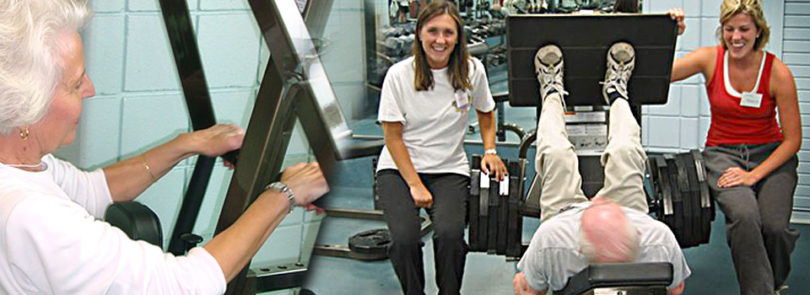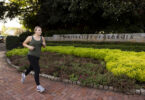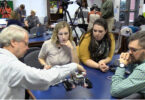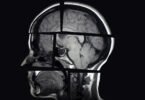Elaine Cress’ Exercise and Aging Class, held every spring, is so popular that participants race to fill the 15 available slots in January.
UGA students like the class, too.
Cress’ class, an elective in the Department of Kinesiology, is unique in that it pairs some of the class’ students with members of UGA’s chapter of Learning in Retirement, a national organization that promotes continuing education for older adults. Students, some of them preparing for careers in physical therapy, learn about the range of abilities in older adults. In turn, the LIR members enjoy group warm-ups and workouts guided by personal trainers while learning specific exercises for both upper and lower body strength.
The class is not only a seamless blend of kinesiology and gerontology, it’s also an opportunity for community outreach, says Cress, who is an associate professor of kinesiology, on the faculty of the Institute of Gerontology, and director of the Aging and Physical Performance Laboratory.
“It’s a good town and gown thing,” she says. “It’s a symbiotic relationship, and those win-win situations are always the best.”
Cress began the class in 2000 after noticing older adults needing assistance in weight-lifting in the gym. It occurred to her that bringing these adults to her classroom would also afford her students the opportunity of getting to know and help individuals, rather than be limited to textbook cases. The split undergraduate and graduate course both fills a requirement for the gerontology graduate certificate and acts as an elective for students in such disciplines as nutrition and adult education.
In the class, Cress has witnessed the students and the LIR members bond, offering the other words of advice and encouragement.
“On a more esoteric level,” she says, “I think it breaks down the myths and the stereotypes that both have of the other generation.”
Sylvia Hutchinson, LIR member and professor emerita of higher education and reading education, enjoyed taking the most recent class.
“My doctor asked what I had been doing to effect such beneficial changes when she examined me after taking the class,” she says. “The students were wonderful, very energetic and gracious in encouraging us to try harder. They were interested in us and made us feel that they truly cared about our experiences. They were incredibly knowledgeable and gave good instruction. I had to keep reminding myself that they were in training and not full-fledged professionals.”
The students, acting as personal trainers, “helped me to increase my strength and flexibility by using proper form when using the equipment and free weights,” says Bill Flatt, LIR member and professor emeritus of nutrition. “The increases were documented by pre- and post-tests, and it was reassuring that even at my age – almost 75 years of age – I increased both upper and lower body strength significantly.
“Another benefit of taking the class was that I became well acquainted with some truly outstanding young students,” he adds. “They were my cheerleaders as well as technical advisors, and it was a class that I looked forward to attending.”
Cress says she hopes to make her class a model for national university-level classes to emulate.
“My goal is to demonstrate the pedagogical technique of cross-generational teaching and learning, and move it into a greater realm,” she says.








